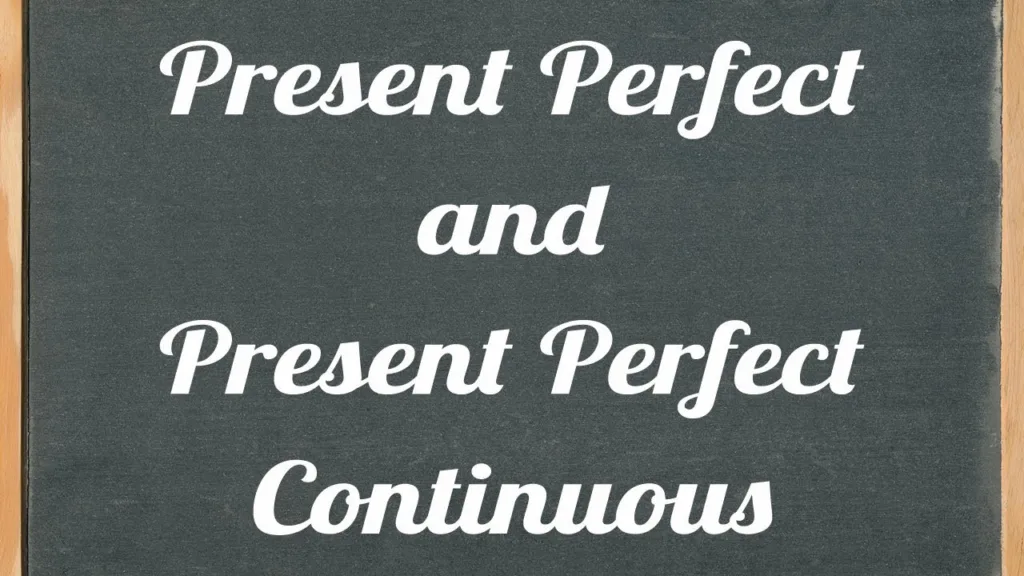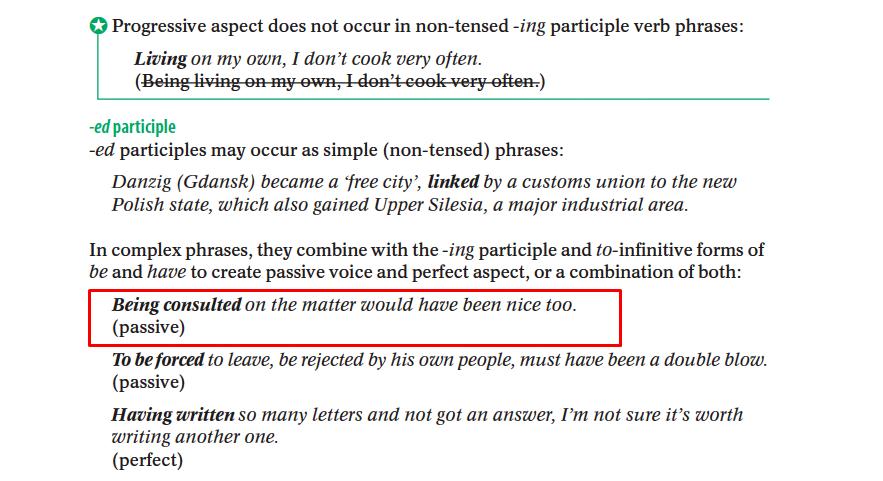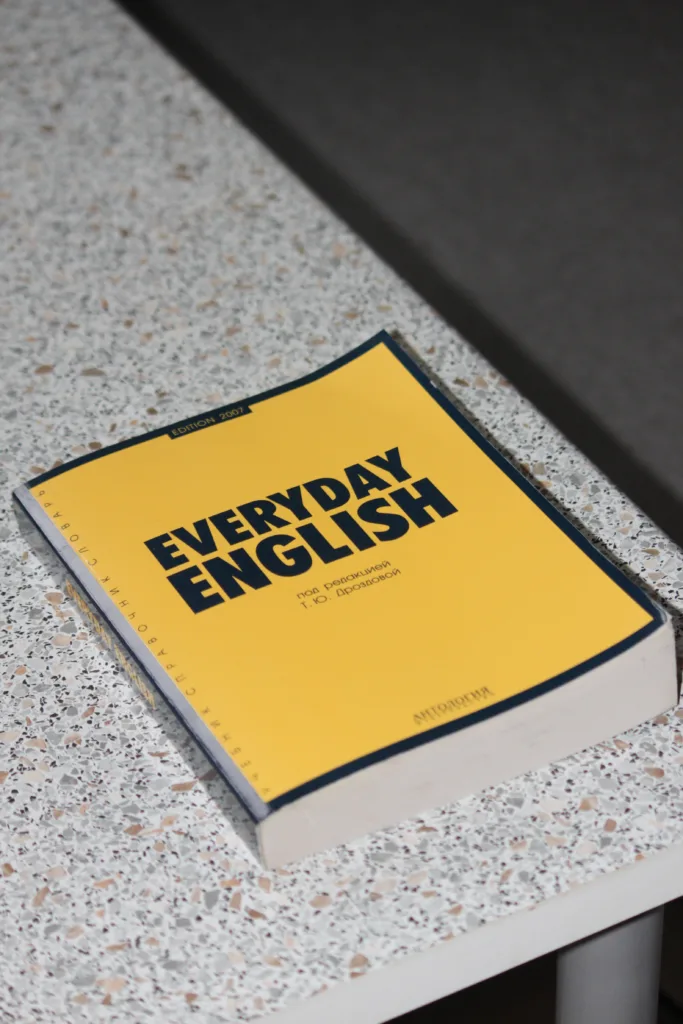The present perfect continuous, also known as the present perfect progressive, is a verb tense that is used to describe an action that started in the past and is still ongoing in the present. It is formed by using the auxiliary verbs “have/has been” fllowed by the present participle (-ing) form of the verb.
For example, “I have been studying for three hours” implies that the speaker started studying three hours ago and is still studying at the present moment.
The present perfect continuous is often used to emphasize the duration of an action. It conveys the idea that the action has been happening for a long time and is still ongoing. It is also commonly used to describe temporary situations that started in the past and are still ongoing.
Here are some more examples:
– “He has been working at the company for ten years.”
– “I have been learning Spanish for six months.”
– “They have been renovating their house for weeks.”
One important thing to note is that the present perfect continuous can also be used to describe actions that have just finished, but the emphasis is still on the duration of the action. For example, “I have been cleaning the house all morning” implies that the speaker has just finished cleaning, but the focus is on the fact that they’ve been cleaning for a long time.
It is also possible to use the present perfect continuous with time expressions like “since” and “for”. “Since” is used to indicate the starting point of the action, while “for” is used to indicate the duration of the action. For example:
– “I have been studying since 9 am.”
– “She has been living in Paris for two years.”
The present perfect continuous is a verb tense used to describe ongoing actions that started in the past and are still happening in the present. It is formed using “have/has been” followed by the present participle (-ing) form of the verb. It is often used to emphasize the duration of an action and can also be used with time expressions like “since” and “for”.
The Difference Between PP and Have Been PP
When it comes to verb tenses, it’s essential to understand the difference beween the Present Perfect (Have P.P.) and Present Perfect Progressive (Have been V+ing) forms. The Present Perfect tense is used for completed actions that happened at an unspecified time in the past and may still have an effect in the present. For example, “I have visited Paris three times.” The Present Perfect Progressive, on the other hand, is used for ongoing actions that started in the past and continue into the present. For instance, “I have been studying French for three years.”
It is crucial to note that the Present Perfect Progressive emphasizes the duration of the activity, while the Present Perfect Simple focuses on the completion of the action. In other words, the Present Perfect Progressive describes how long an activity has been going on, while the Present Perfect Simple states that the activity has been completed at some point in the past.
To summarize, the Present Perfect Progressive (Have been V+ing) is used to describe actions that began in the past and are still ongoing in the present, while the Present Perfect Simple (Have P.P.) is used to describe completed actions that have an impact on the present.

The Tense of ‘Have Been’
The tense of “have been” is the present perfect tense in English grammar. It is a compound verb form that consists of the auxiliary verb “have” in the present tense and the past participle of the main verb “been.” This tense is used to describe actions or states that started in the past and continue up to the present or have just been completed.
Moreover, the present perfect tense is often used to express experiences or changes that have occurred over a period of time. For example, “I have been studying English for five years.” Here, the speaker is emphasizing their experience of studying English for a specific period of time, and the action is stll ongoing in the present.
It is important to note that the present perfect tense is formed differently for different subjects, such as “has been” for third-person singular subjects, and “have been” for first and second-person singular subjects and plural subjects.
The Meaning of ‘Should Have Been PP’
“Should have been” is a verb tense used to express regret or disappointment about somethng that did not happen in the past. It is formed by using the auxiliary verb “should” followed by the past participle of the main verb and the auxiliary verb “have.”
For example, “I should have been more careful with my money” means that the speaker regrets not being careful with their money in the past. The phrase “should have been” can also be used to express a missed opportunity or a mistake, such as “I should have been studying for my exam instead of watching TV.”
“should have been” is a verb tense used to express regret, disappointment, a missed opportunity, or a mistake that occurred in the past.
Using ‘Have Been’ in Tenses
The tense that typically follows “have been” is the present participle tense, also known as the -ing form of the verb. This combination forms the present perfect continuous tense, which is used to emphasise an action that started in the past and is still continuing in the present. For example, “I have been studying for three hours” emphasises that the studying started in the past and is still ongoing. It is important to note that the present perfect continuous is formed by using “have/has been” with the -ing form of the verb.
The Use of ‘Will Have Been’ in Grammar
The future perfect progressive, also kown as the future perfect continuous, is a verb tense used to describe an action that will continue up until a specified point in the future. The structure of this tense includes the auxiliary verb “will,” the auxiliary verb “have,” the past participle form of the main verb, and the present participle form of the main verb (-ing).
For example, “By the time I finish my studies, I will have been studying for six years.” In this sentence, “will” indicates the future time frame, “have been studying” is the future perfect progressive construction, and “six years” is the duration of the action.
The future perfect progressive is often used to describe actions that will be ongoing and still in progress at a specific time in the future. It can also be used to speculate about hypothetical situations in the future. It is a complex tense that is not commonly used in everyday speech, but is more often seen in formal or academic writing.
To summarize, the future perfect progressive, or will have been pp grammar, is a verb tense used to describe ongoing actions that will continue up until a specific point in the future. It is a complex tense that requires the auxiliary verbs “will” and “have,” as well as the present participle form of the main verb.

Source: slideplayer.com
Grammatical Accuracy of IFs
“have been” is grammatically correct. It is the present perfect tense form of the verb “be” used with plural subjects (including the pronouns I, we, and they). The present perfect tense is used to describe an action or situation that started in the past and continues up to the present moment, or has just recently finished. For example, “I have been studying English for three years” or “They have been working on the project since last month.”
Using the Present Perfect Tense
The past perfect tense, also known as pluperfect tense, is a grammatical structure that is used to describe an action that was completed before another action or time in the past. This tense is formed by using the auxiliary verb “had” with the past participle of the main verb. For example, “She had eaten breakfast before she went to work.”
To use the past perfect tense correctly, you need to identify two past actions or events and establish which one occurred first. The earlier action is expressed in the past perfect tense, while the lter action is expressed in the simple past tense.
Here are some examples:
– “I had finished my homework before I watched TV.” (The action of finishing homework happened before the action of watching TV.)
– “They had already left when we arrived.” (The action of leaving happened before the action of arriving.)
– “He had been working at the company for five years before he got promoted.” (The action of working for five years happened before the action of getting promoted.)
It’s important to note that the past perfect tense is commonly used in storytelling, as it allows for a clear chronological order of events. Additionally, the past perfect tense can be used to express regret, as in “I wish I had studied harder for the exam.”
The past perfect tense is a useful tool for describing past events in a clear and concise manner.
The Meaning of Verb PP
A verb PP, also known as a verb participle, is a form of a verb that expresses a completed action. In traditional grammar, it is considered one of the principal parts of a verb. In English, the verb PP is commonly used in the formation of perfect tenses in the active voice and in all tenses in the passive voice.
For example, in the sentence “I have written a letter,” the verb PP “written” is used to express the completed action of writing the letter. In the passive voice, the sentence “The letter was written by me” uses the verb PP “written” to show that the letter was completed by the subject, me.
It is important to note that the formation and use of verb PPs can vary depending on the language beig used. However, in English, understanding the concept of verb PPs is crucial for mastering grammar and communication skills.
The Impact of IFRSs on Accounting Practices
The phrase “have been” is a verb tense known as the present perfect tense. This tense is used to describe an action that started in the past and continues up until the present moment. It is formed by using the auxiliary verb “have” (or “has” for the thid person singular) followed by the past participle of the verb.
Therefore, it is not accurate to say that “have been” is simply past tense, as it implies ongoing or continuous action that extends to the present. It is a present perfect tense that refers to a completed journey or experience in the past that has some relevance to the present.
“have been” is a present perfect tense that describes a past action or experience that continues up until the present moment, and is not simply a past tense.

Source: english.stackexchange.com
What Does PP Stand For?
The abbreviation “PP” stands for “pages.” It is commonly used when referring to the specific pages within a document or publication. For instance, if you are referencing a book or a report, you might say “Please see pp. 20-25 for more information on this topic.” The use of “PP” in this context helps to clarify which pages are being referred to, especially if there are multiple sections or chapters within the document. It is a widely recognized abbreviation in academic and professional settings.
What Does PP Mean in Texting?
When it comes to legal documents, it is not uncommon to see the abbreviation “PP” before a person’s name. This abbreviation stands for “per procurationem,” which means “by proxy” in Latin.
In simpler terms, when someone signs a document “PP” before another person’s name, it means that they are signing the document on behalf of that person. This is typically done when the actual person is unavailable or unable to sign the document themselves, and they give permission for someone else to sign on thir behalf.
It is important to note that the person signing the document “PP” must have the explicit permission of the person they are signing for. This can be done through a power of attorney agreement or other legal documentation.
Seeing “PP” before a person’s name on a document simply indicates that the signature is not from the actual person but from someone who has been authorized to sign on their behalf.
The Usage of ‘Been’
After “been,” a past participle is used in English grammar. The past participle is the third form of a verb, which usually ends in “-ed” for regular verbs. For example, “I have been invited to the party” or “He had been selected for the team.” However, for irregular verbs, the past participle can have different forms. For instance, “I have been to Paris” or “She had been bitten by a dog.” It is important to note that the use of “been” indicates that the action has already happened in the past and is now completed.
Have Been: A Verb
The verb “have been” is a compound verb formed by combining the auxiliary verbs “have” and “been”. “Have” is the present tense form of the verb “to have”, whie “been” is the past participle form of the verb “to be”. When used together, “have been” functions as the present perfect continuous tense, indicating an action that began in the past and continues up to the present moment. This tense is formed by using the auxiliary verb “have” in the present tense, followed by the past participle “been”, and ending with the present participle (root + -ing) of the main verb. It is important to note that “have been” is used with plural subject pronouns like “they”, “we”, and “you”. For example, “They have been studying for hours” or “We have been waiting for the bus”.

The Tense of ‘There Have Been’
The verb construction “have been” is a part of the present perfect tense. This tense is used to describe an action or a state that occurred at an unspecified time in the past and has a connection with the present. “Have been” is used to indicate that somethng has happened in the past and is continuing in the present or has just recently stopped. It is also used to express a repeated action or a habit that started in the past and continues up to the present. For example, “I have been studying Spanish for three years” indicates that the action of studying began at an unspecified point in the past and is still ongoing in the present.
Conclusion
The Present Perfect Progressive or Present Perfect Continuous, also known as “Have Been V+ing,” is a tense used to describe an activity that started in the past and continues to the present. It is formed by using have/has been and the -ing form of the verb. This tense is often used to emphasise that something is still ongoing in the present.
It is important to differentiate btween the Present Perfect Simple and the Present Perfect Progressive. The Present Perfect Simple is used for completed actions, whereas the Present Perfect Progressive is used for ongoing actions.
Additionally, “Has been” and “Had been” belong to the perfect tense and perfect progressive/continuous tense. “Has been” and “Have been” are in the present perfect tense, while “Had been” is in the past perfect tense. The use of “should have + past participle” is used to express regret about past actions.
The Present Perfect Progressive is a useful tense for describing ongoing activities that started in the past and continue to the present. It is important to use the correct tense to accurately convey the intended meaning. By using synonyms and avoiding repetition, one can write in a clear and concise manner.
